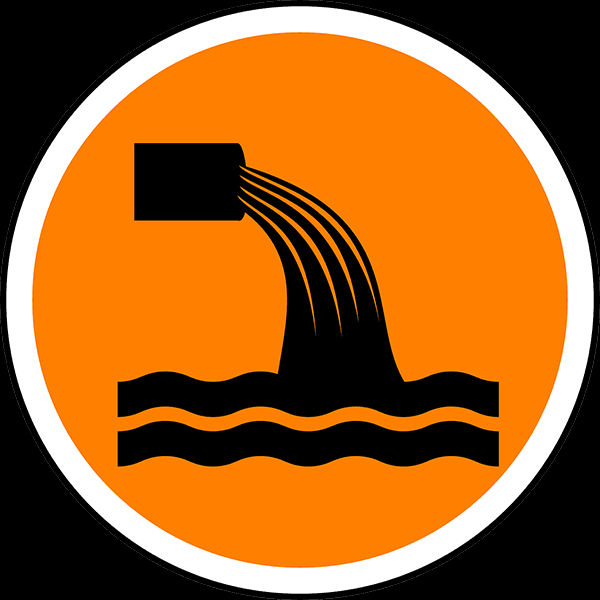The Only Guide for Reclaim Waste
Table of ContentsReclaim Waste Things To Know Before You BuyThe Reclaim Waste StatementsReclaim Waste Fundamentals ExplainedNot known Factual Statements About Reclaim Waste 8 Easy Facts About Reclaim Waste Shown
Check out the kinds, incidents, and forms of fluid waste. Domestic sewage waste describes the waste and products from a domestic septic tank. This kind of waste is produced by human beings in homes, schools, and various other buildings. This only includes sewage-disposal tanks that have a drainpipe field. The correct administration and disposal of domestic sewer waste require liquid waste to be moved to a sewage therapy plant where the appropriate methods and devices are put on cleanse and throw away waste.
Commercial waste often consists of potential dangers, such as flammable products or a mixture of liquid and solid waste products, and requires an advanced and comprehensive disposal process. The disposal of business waste generally includes the purification of waste prior to transportation to ensure safe and appropriate disposal. Hazardous waste is developed from results and runoff of industrial processes and production.
This type of waste can not utilize the very same sewer management transportation or processes as septic or industrial liquids. The industrial waste administration procedure needs the examination and screening of fluid waste prior to it undertakes the disposal procedure (liquid waste disposal melbourne). Runoff waste is the liquid waste that comes from runoff and excess stormwater in highly populated areas or cities
Drainage waste can create contamination and flooding if not managed appropriately. Guaranteeing proper waste monitoring can stop catastrophes and reduce ecological damage.
Reclaim Waste for Dummies
Get in touch with PROS Solutions today to learn more about our waste management and disposal solutions and the proper methods to look after the liquid waste you generate.
(https://filesharingtalk.com/members/604691-reclaimwaste1)Do you know what happens to your water when you disengage, flush the commode or drain the washing equipment? No? Well, it's worth recognizing. This supposed 'wastewater' is not only an essential resource but, after therapy, will be launched to our land, waterways or the sea. Used water from commodes, showers, baths, cooking area sinks, laundries and commercial processes is referred to as wastewater.

water utilized to cool down machinery or clean plant and tools). Stormwater, a form of wastewater, is drainage that flows from farming and city areas such as roofs, parks, yards, roadways, paths and seamless gutters into stormwater drains pipes, after rain. Stormwater streams neglected straight to local creeks or rivers, ultimately getting to the ocean.
The 45-Second Trick For Reclaim Waste
In Queensland, most wastewater is treated at sewer therapy plants. Wastewater is moved from residential or commercial websites with a system of sewers and pump terminals, recognized as sewage reticulation, to a sewage treatment plant.
The Department of Natural Resources recommends local governments about handling, operating and keeping sewage systems and therapy plants. In unsewered locations, city governments may require owners to mount private or family sewage therapy systems to deal with domestic wastewater from toilets, kitchens, bathrooms and washings. The Department of Natural Resources authorises making use of family systems when they are verified to be efficient.
In some new subdivisions, therapy of some stormwater to remove clutter, sand and gravel has actually begun making use click to read of gross contaminant catches. Wastewater treatment takes place in four phases: Removes strong matter.
Utilizes little living organisms understands as micro-organisms to damage down and get rid of remaining dissolved wastes and fine bits. Micro-organisms and wastes are included in the sludge.
Reclaim Waste Can Be Fun For Everyone
Nutrient removal is not offered in any way sewer treatment plants since it needs costly specialist equipment. It is becoming much more typical in Queensland. Clear liquid effluent produced after treatment may still contain disease-causing micro-organisms. If this effluent is launched right into rivers such as rivers or the sea, the micro-organisms will ultimately pass away out.

This typically indicates wastewater has actually to be treated or contaminants removed prior to it can be released to rivers. The majority of wastewater streams into the sewage system. Under the Act, city governments carry out authorizations and licences for eco appropriate activities (Periods) including wastewater releases that may have a regional impact. The division administers authorizations and licences to ERAs including wastewater releases that could have a local or statewide impact.
Not known Facts About Reclaim Waste
Surveillance provides factual information regarding water quality and can confirm that licence problems are being satisfied. The information obtained with tracking gives the basis for making water quality decisions.